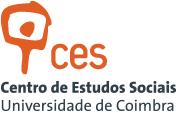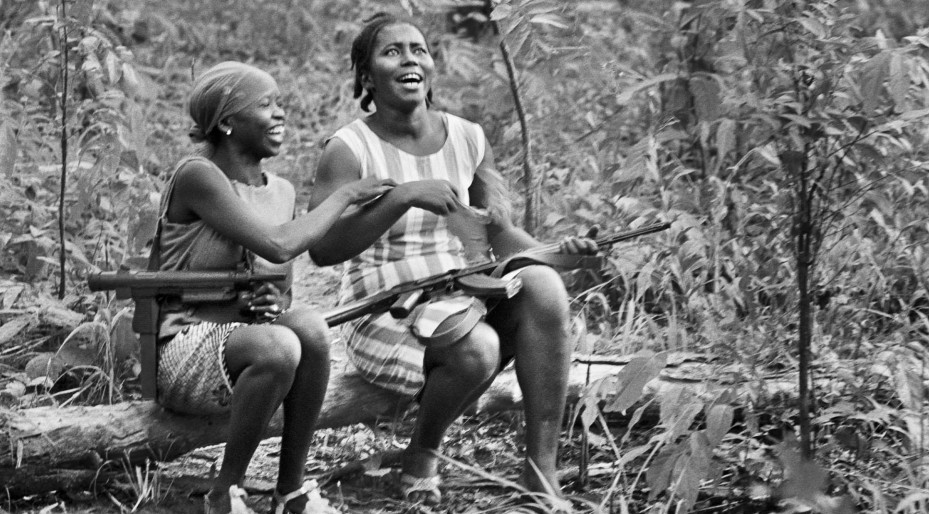Exposição Fotográfica
«Revoluções: Guiné-Bissau, Angola e Portugal (1969-1974)» | Fotografias de Uliano Lucas
17 de novembro de 2023 - 17 de março de 2024 | Quarta a segunda | 15h00-20h00 (última entrada às 19h30)
Galeria Pedro Olayo (filho), Convento S. Francisco (Coimbra)
© Uliano Lucas
A exposição “Revoluções – Guiné-Bissau, Angola e Portugal (1969-1974)”, de Uliano Lucas, é a história de uma viagem feita de várias viagens. As 56 fotos - algumas inéditas, outras publicadas em Itália em catálogos fotográficos na década de 1970 ou em revistas e jornais europeus da época - constituem apenas uma amostra do vasto acervo de imagens de Uliano Lucas sobre este assunto. A exposição está dividida em três partes que correspondem a três territórios fotografados por Uliano Lucas entre 1969 e 1974: a primeira secção, intitulada Guiné-Bissau, 1969, reúne algumas das fotos realizadas na missão que o levou às “zonas libertadas” da Guiné, a pedido do PAIGC; a segunda secção - Angola, 1972 - inclui imagens da vida quotidiana dos guerrilheiros e das guerrilheiras do MPLA; a terceira e última secção intitula-se Portugal, 1972 e 1974 e retrata aspetos da vida quotidiana do país no período derradeiro da ditadura (1972) e os dias de festa da Revolução (1974).
As fotografias de Uliano Lucas são expostas pela primeira vez em Coimbra. Não há ocasião mais propícia que estes meses que antecedem os cinquenta anos da revolução do 25 de Abril e das independências de Angola, Guiné-Bissau, Moçambique, Cabo Verde e São Tomé e Príncipe. Publicadas hoje, as fotografias de Uliano Lucas contribuem para fazer curto-circuitar a memória de passados que marcaram a história do século XX, trazendo-os de volta ao presente.
Sobre o fotógrafo
O fotojornalista Uliano Lucas (nascido em 1942) cresce em Milão, onde estuda nos colégios da ‘Rinascita’ e, desde muito jovem, frequenta o ambiente de artistas e intelectuais do bairro de Brera. Nas suas primeiras fotografias, o protagonista é a cidade de Milão, em particular a vida artística (de escritores, músicos, pintores) nas décadas de 1960 e 1970.
O ano de 1968 será fundamental para o fotojornalista italiano. Emerge então a importância do compromisso político que nunca abandonará, compromisso esse que se reflete nas reportagens que faz, retratando os protestos estudantis e operários daqueles anos. O período seguinte é marcado por reportagens sobre os movimentos de libertação: o fotógrafo parte, frequentemente por iniciativa própria, para o continente africano e os seus trabalhos são publicados em revistas alemãs e francesas, já que em Itália – com algumas exceções, como L’Espresso ou Vie Nuove – nenhum jornal estava particularmente interessado em publicar fotografias políticas, retratando a guerrilha, o quotidiano na floresta, a luta pela liberdade, o nascimento de novas democracias.
Será no verão de 1969, que Uliano Lucas, juntamente com o jornalista Bruno Crimi (1939-2006), empreende uma viagem às zonas libertadas da Guiné-Bissau. A reportagem será publicada em diferentes jornais (salienta-se, nomeadamente, a publicação no semanário Vie Nuove) e no livro, publicado em 1970, intitulado Guinea Bissau: una rivoluzione africana, pela editora Vangelista, de Milão (com textos de Bruno Crimi e fotos de Uliano Lucas).
Posteriormente, Uliano Lucas viajará pelo continente africano - Argélia, Tunísia, Tanzânia, Congo, Moçambique, Zâmbia, Etiópia, Eritreia... - acompanhando os processos de descolonização e, depois, os problemas, as realidades e as transformações destes países. Abordará também a violência em instituições psiquiátricas em Itália, denunciando a situação, bem como o fenómeno migratório no norte da Europa.
A partir da década de 1990, para além das reportagens sobre países em guerra – um caso exemplar é a reportagem durante o conflito na Jugoslávia –, documenta as transformações na vida quotidiana e no mundo do trabalho em grandes cidades italianas como Turim, Milão e Génova e em algumas regiões em particular (como Puglia, Abruzzo e Veneto), para depois se dedicar, até hoje, às questões relacionadas com a emigração e a imigração.
Ficha Artística/Técnica
Curadoria | Elisa Alberani, Miguel Cardina, Vincenzo Russo
Pesquisa Iconográfica | Tatiana Agliani – Archivio Uliano Lucas (Asti)
Pós-Produção das Fotografias | Cristina Gramegna – Studio De Stefanis (Milão)
Coorganização: Convento São Francisco/Câmara Municipal de Coimbra, Instituto Italiano de Cultura de Lisboa, Cátedra António Lobo Antunes, Universidade de Milão, Centro de Estudos Sociais da Universidade de Coimbra (projeto CROME e iniciativa “50 anos de Abril”), Edições do Saguão, Arquivo Uliano Lucas


